Camille Claudel in 5 Sculptures
Camille Claudel was an outstanding 19th-century sculptress, a pupil and assistant to Auguste Rodin, and an artist suffering from mental problems. She...
Valeria Kumekina 24 July 2024
You’ve heard of Diego Rivera and Frida Kahlo, but what about the American artist who worked alongside them for much of their careers? Emmy Lou Packard was a 20th-century painter, printmaker, and activist whose work grappled with themes of inequality and social justice. She is perhaps best known for being chief assistant to the great muralist Diego Rivera and long-time confidant of Frida Kahlo. Here, we examine her art, activism, and relationship with the iconic Mexican duo.
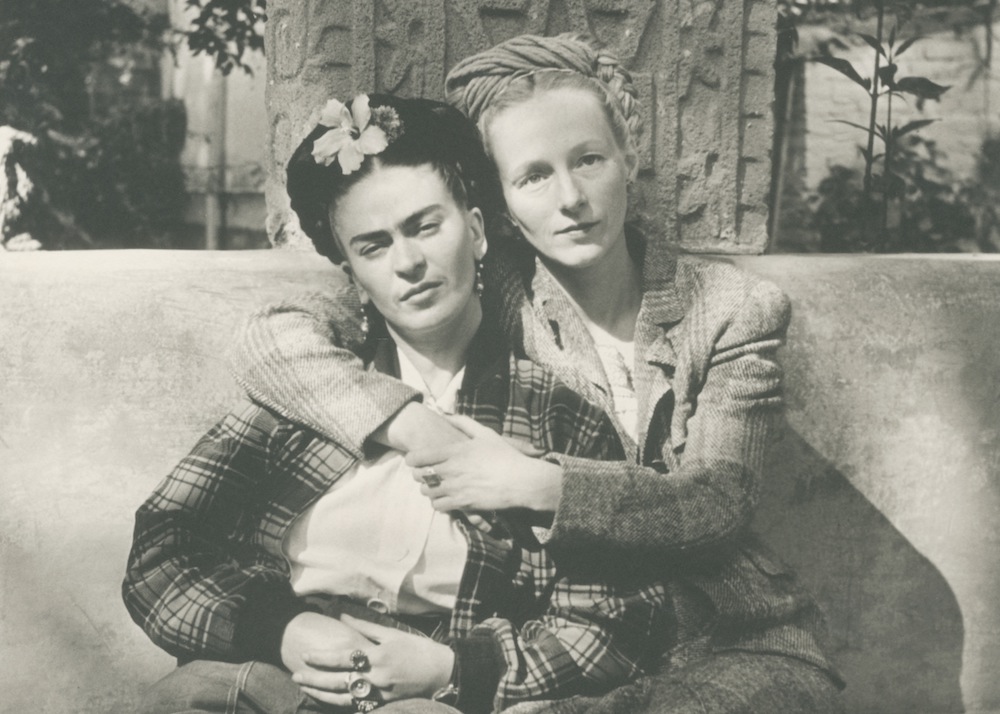
Frida Kahlo and Emmy Lou Packard. Archives of American Art, Smithsonian Institution.
Emmy Lou Packard was born in El Centro, California, in 1914. Her parents were founding members of an agricultural cooperative community in the Imperial Valley. In 1927, Packard’s father moved his family to Mexico City, where he—an internationally known agronomist—worked as a consultant on the government’s historic land reform program. Packard, who at 13 years old was already a talented artist, was taken by her mother to meet an acclaimed Mexican muralist and his wife, Diego Rivera and Frida Kahlo.
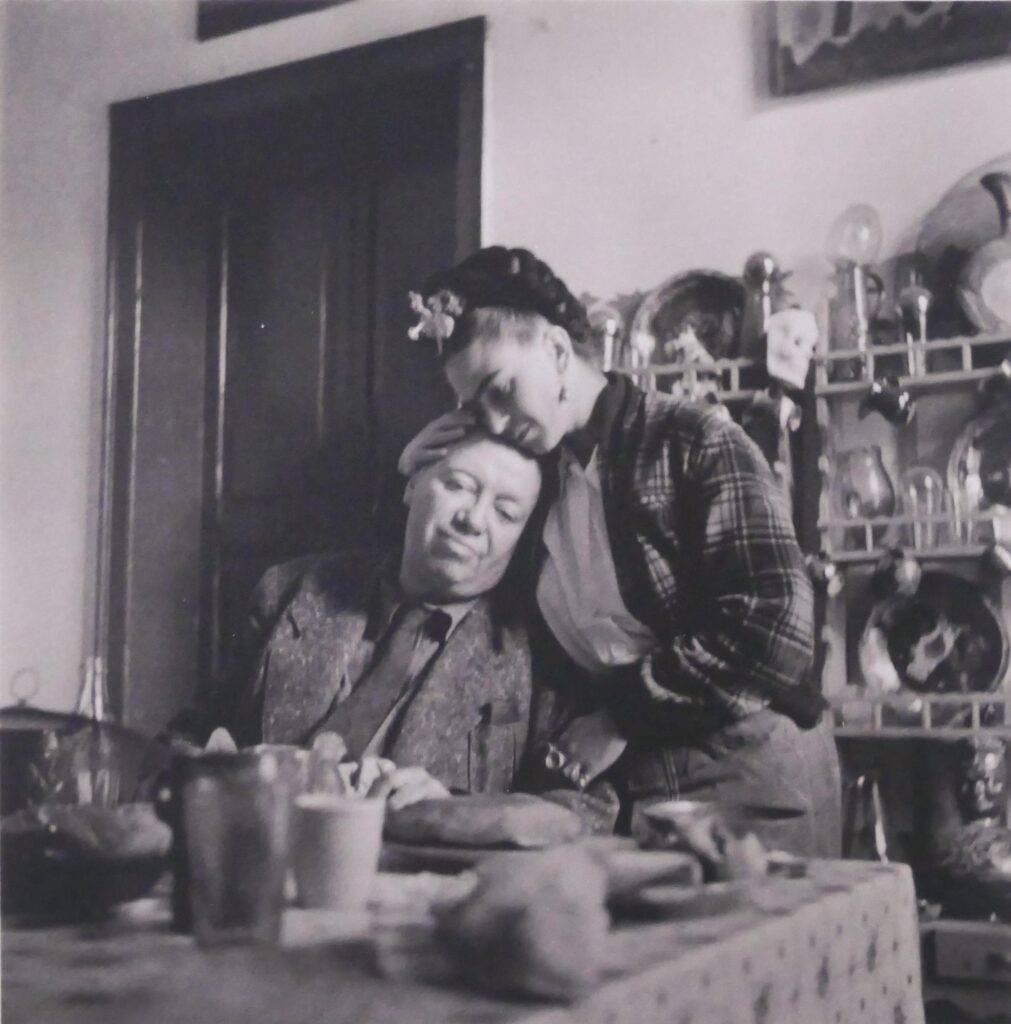
Diego Rivera and Frida Kahlo in their home in Coyoacán, Mexico City. Photo taken by Emmy Lou Packard. Archives of American Art, Smithsonian Institution.
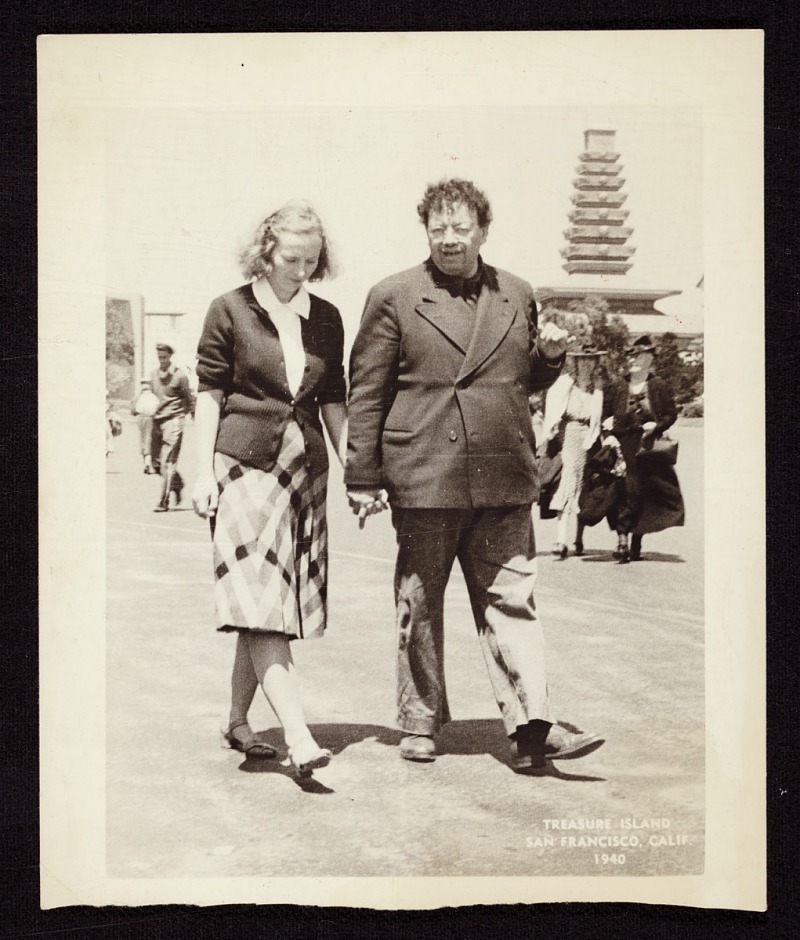
Packard and Rivera, San Francisco, 1940. Archives of American Art, Smithsonian Institution.
Rivera immediately encouraged Packard’s talent and offered to give her art lessons. Packard studied with Rivera from 1927 to 1928. The Mexican muralist recalled seeing Packard for the first time: “She was a blond, melancholy little girl with the face of a French gothic angel plucked from the reliefs of Chartres, but she had been born just two miles from the border of Mexico. Embarrassed and shy, bright little savage, she had all the character of the country in which she was born.”
I was surprised at the extraordinary character, the sensitivity of tones, and the objective and subjective truth of the paintings of Mexican life that this North American child had done.
Packard enjoyed an intimate friendship with Diego and Frida but returned to the United States to attend the University of California Berkeley from 1932 to 1936. While at UC Berkeley, Packard was the editor of the daily paper and literary magazine, as well as the first woman editor of the humor magazine, Pelican. She continued her studies at the California School of Fine Arts in San Francisco.
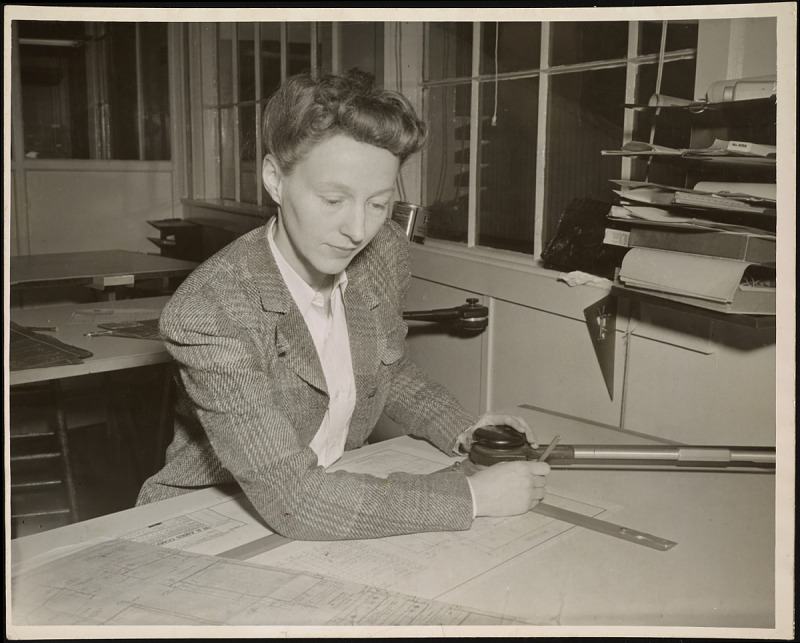
Emmy Lou Packard. Archives of American Art, Smithsonian Institution.
In 1940, Packard became chief assistant to Rivera when he came to the United States to create the 1,650-square-foot Pan American Unity mural for the Golden Gate International Exposition on Treasure Island. The mural, created on a scaffold in an airplane hangar before a live audience, represents Rivera’s vision of a shared North American past, present, and future. At a time of global conflict, Rivera called for cultural solidarity. Packard is featured in the mural as a central figure in the composition, wearing a red sweater while standing at her easel.
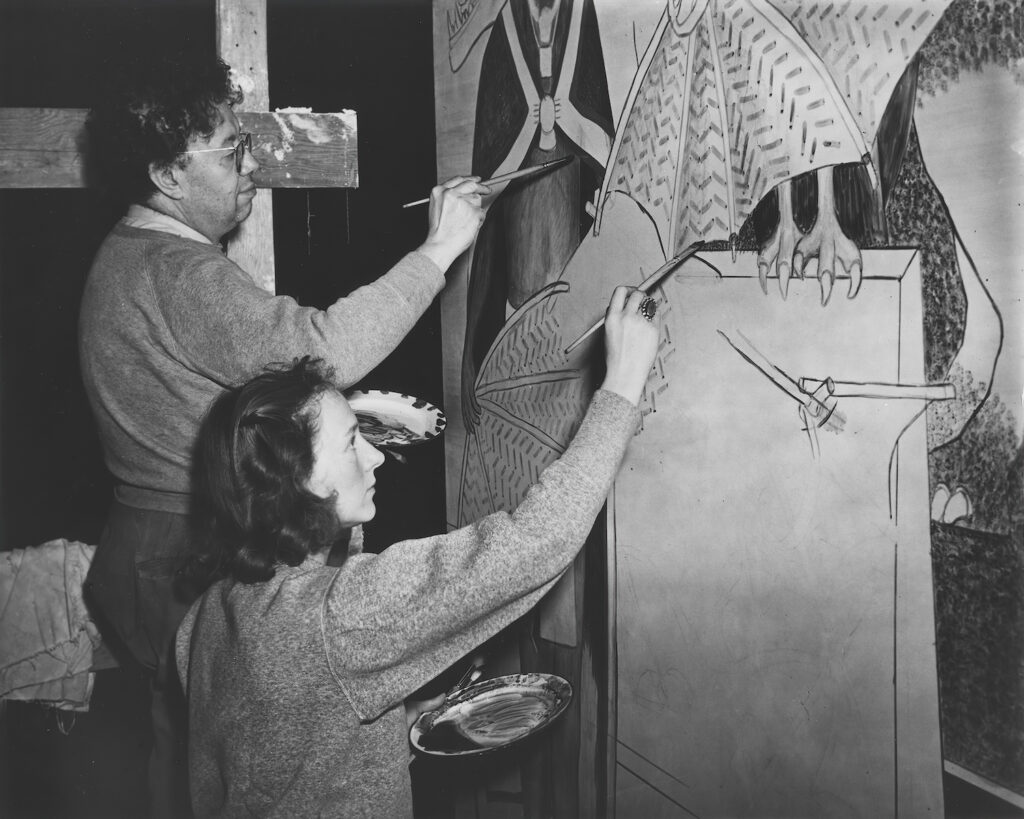
Diego Rivera and Emmy Lou Packard Painting for the Golden Gate International Exhibition on Treasure Island in San Francisco Bay, 1938-40. 48hills.
[…] With scenes of the Bay Area as a backdrop, the mural celebrates the creative spirit through portraits of artists, artisans, architects, and inventors who use art and technology as tools to shape society.
After the Exposition, Packard returned to Mexico as a guest in the house of Rivera and Kahlo in Mexico City’s Coyoacán neighborhood. While living with the iconic duo, Packard always kept her camera nearby; she would take some of their most treasured photographs. The American artist also became a confidant to Rivera and Kahlo, whose turbulent relationship endured divorce, affairs, and re-marriage.
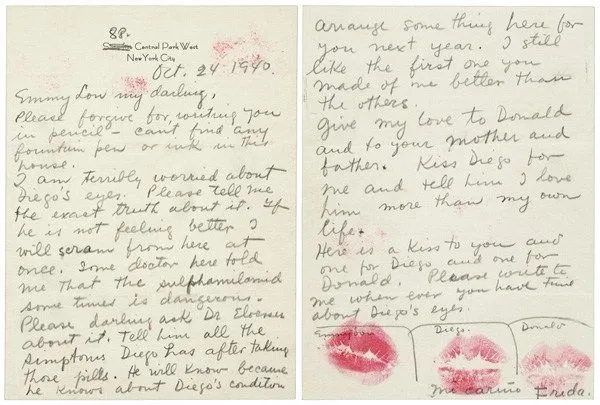
Letter from Frida Kahlo to Emmy Lou Packard, 1940. Archives of American Art, Smithsonian Institution.
Social justice is the driving force throughout Packard’s oeuvre. Her art celebrates diversity, peace, and nature while tackling complex social topics, including low wages and gender discrimination. Through printmaking, Packard could make her work accessible to all those who wished to acquire it. She wanted her work to be easily understandable and to be able to reach people en masse. Her prints went on to gain significant popularity in the Bay Area during the 1950s and 1960s.
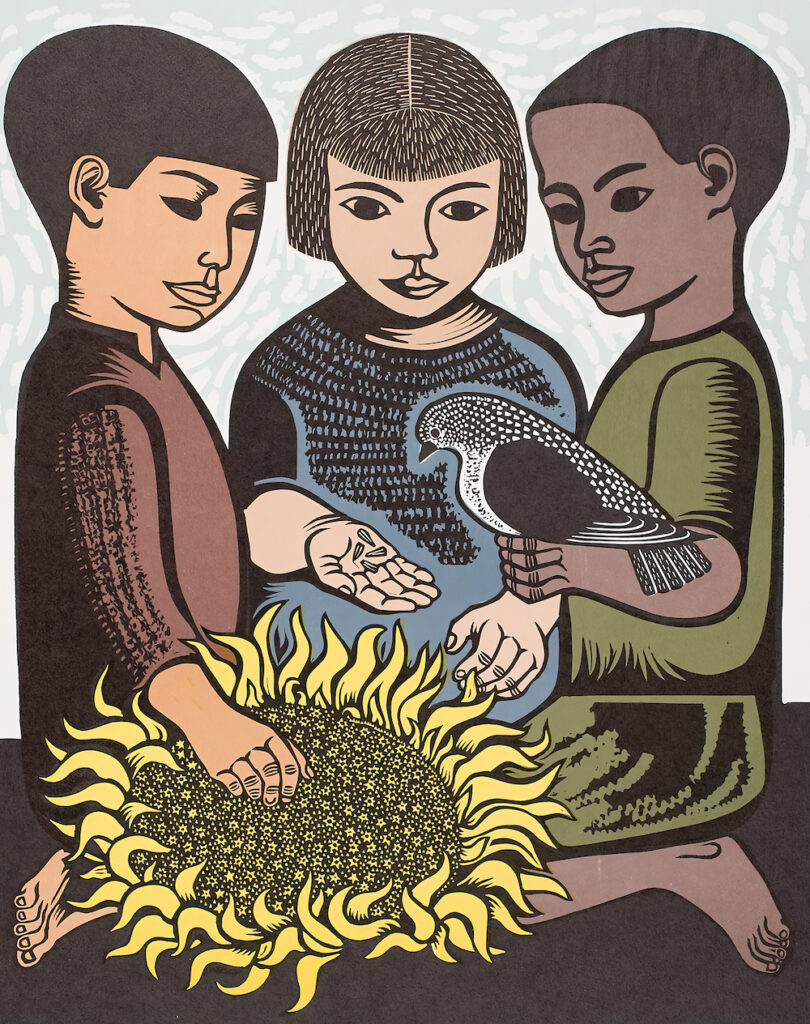
Emmy Lou Packard, Peace is a Human Right, 1949, Richmond Art Center, Richmond, CA, USA.
Packard was also a steadfast supporter of the preservation of the Mendocino headlands. With the community’s support, she began collecting signatures door-to-door for a campaign that would result in a land transfer deal with Boise Cascade, preserving what is now known as the Mendocino Headland State Park.
Packard’s work appealed to people for its beautiful color, strong design, and narrative content. She promoted the dignity of labor and celebrated the beauty of the natural environment and progressive political principles such as peace, racial diversity, and the joy of children.
Throughout her long career, Packard produced nearly 300 oil paintings, watercolors, and drawings. She took part in numerous group exhibitions in California, and her first solo exhibition took place at the San Francisco Museum of Art (now the San Francisco Museum of Modern Art) in 1942.
Today, her work can be found in the collections of the Addison Gallery of American Art, Andover, Massachusetts; the British Museum, London; the Oakland Museum of California; the Fine Arts Museums of San Francisco, California; the Krannert Art Museum of the University of Illinois Urbana-Champaign; and the National Gallery of Art, Washington, D.C.
Packard died on February 22, 1998, in San Francisco, California.
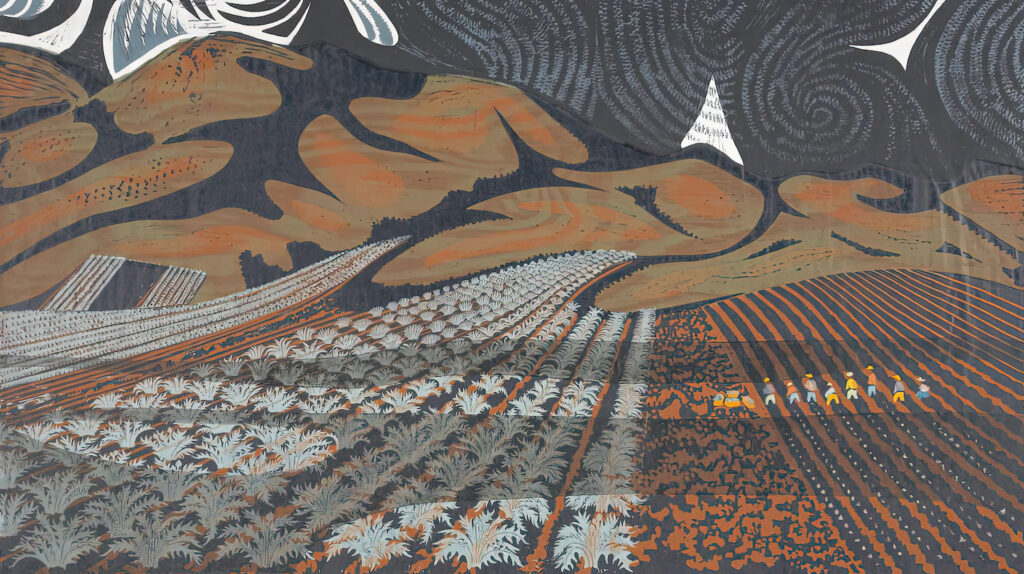
Emmy Lou Packard, Landscape Near Half Moon Bay, 1950s, Richmond Art Center, Richmond, CA, USA.
DailyArt Magazine needs your support. Every contribution, however big or small, is very valuable for our future. Thanks to it, we will be able to sustain and grow the Magazine. Thank you for your help!